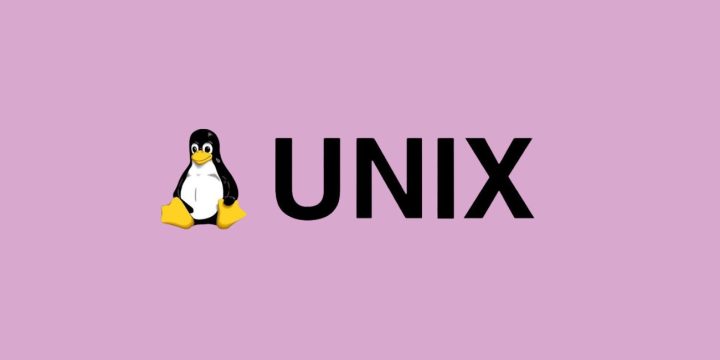Unix and Linux are two of the most important operating systems in computing history. Both are powerful, stable, and used around the world for servers, programming, and network management. They look similar and share many commands, yet they differ in their construction, usage, and licensing.
Understanding the difference helps you know which one suits your needs — whether you’re running a business server, learning programming, or setting up a personal computer.
What Is Unix

Unix is a multiuser, multitasking operating system first developed at AT&T Bell Labs in 1969. It was designed for stability and security in enterprise and academic environments. Over time, many commercial versions of Unix were created by companies such as IBM (AIX), HP (HP-UX), and Oracle (Solaris).
Pivotal traits of Unix:
- Proprietary and commercial
- Stable and secure for enterprise systems
- Vendor-specific versions
- Commonly used on large servers and workstations
Unix set the standard for how modern operating systems work — from file structure to command-line navigation.
What Is Linux

Linux is a free, open-source operating system created by Linus Torvalds in 1991. It was inspired by Unix but designed to be open to everyone. Linux is built around the Linux kernel and uses components from the GNU Project, forming what’s often called GNU/Linux.
Pivotal traits of Linux:
- Open source and free to use
- Developed by a global community
- Runs on servers, desktops, and mobile devices
- Available in many versions (called distributions) like Ubuntu, Fedora, and CentOS
Linux has become the foundation for web servers, Android phones, and cloud platforms — offering flexibility and control that Unix lacks.
History and Origins
Both Unix and Linux share the same roots but evolved differently.
Timeline:
- 1969: Unix created at AT&T Bell Labs by Ken Thompson and Dennis Ritchie.
- 1983: The GNU Project began to build a free Unix-like system.
- 1991: Linus Torvalds released the first Linux kernel.
- 2000s onward: Linux became the leading choice for servers and cloud computing.
Unix influenced almost every modern operating system, including macOS, while Linux expanded open-source computing to everyone.
Differences Between Unix and Linux
The main differences between Unix and Linux lie in licensing, accessibility, and hardware support.
| Feature | Unix | Linux |
|---|---|---|
| Source Code | Proprietary | Open source |
| Developer | AT&T Bell Labs | Linus Torvalds & community |
| License | Commercial | GNU GPL |
| Cost | Paid | Free |
| Hardware Support | Limited | Broad |
| Distributions | AIX, HP-UX, Solaris | Ubuntu, Fedora, Debian |
| Users | Enterprise | Developers, servers, general users |
Unix remains strong in enterprise systems, while Linux dominates web servers, education, and cloud computing.
System Architecture Comparison
Both Unix and Linux use a kernel, shell, and file system, but their structure differs slightly. Unix systems tend to be rigid and vendor-specific, while Linux is modular and open for customization.
Unix Architecture: Closed and standardized by vendors.
Linux Architecture: Modular, portable, and adaptable to almost any device.
That flexibility allows Linux to run everywhere — from small IoT devices to the world’s fastest supercomputers.
Command and Shell Comparison
Unix and Linux share many shell commands because Linux was modeled after Unix. You’ll find the same basic commands for navigation and file management:
ls -l
cd /home
mkdir new_folder
However, Linux supports more shell types like bash, zsh, and fish, while Unix often sticks to sh or ksh. Linux also makes scripting and automation easier, making it popular among developers and system admins.
Pros and Cons of Unix vs Linux
Unix Pros:
- Extremely stable and secure
- Ideal for enterprise workloads
- Long-term vendor support
Unix Cons:
- Expensive licenses
- Limited hardware compatibility
- Less flexible customization
Linux Pros:
- Free and open source
- Huge community support
- Works on nearly any hardware
- Constant updates and improvements
Linux Cons:
- Many different distributions can cause confusion
- Some driver issues with new hardware
If you value freedom and flexibility, Linux is better. If you need long-term, vendor-backed reliability, Unix still holds its ground.
Common Uses and Applications
Unix is widely used in industries that require stability, security, and long-term reliability. Many banking and financial systems depend on Unix servers to handle large-scale transactions securely. It’s also used in mainframe computers for processing heavy workloads and running mission-critical applications. Universities and research institutions rely on Unix-based systems for managing complex computations and data analysis because of their proven reliability.
Linux, on the other hand, dominates the modern digital world. It powers most web servers, cloud platforms, and data centers that keep the internet running. You’ll also find it in Android smartphones, embedded systems, and IoT devices, where flexibility and scalability matter most. In addition, Linux is popular for personal computers, schools, and open-source learning environments. It supports platforms like AWS, Google Cloud, and Android, while Unix quietly operates behind the scenes in critical industries that need unmatched dependability.
Which One Should You Use
If you’re a student, developer, or someone learning about systems, choose Linux. It’s free, beginner-friendly, and used everywhere.
If you’re managing corporate infrastructure or legacy systems, Unix may still be required due to long-term enterprise contracts and stability.
For most people, Linux offers more versatility, better community support, and an easier learning path.
Final Thoughts
Unix built the foundation of modern computing, and Linux expanded it into the open-source world. They share the same core philosophy — multitasking, security, and efficiency — but their paths diverged in accessibility and use.
Today, Linux powers most of the internet, while Unix remains a symbol of reliability in enterprise environments. Whether you’re learning programming or managing servers, understanding both gives you a clear view of how computing truly works.

